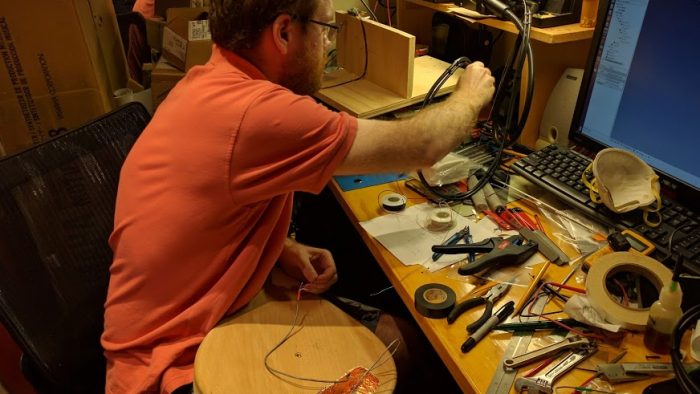(This article first appeared in the Times of India on 13th April, 2019)
Russian pianist, mandolin player and guitarist Denis Petrov is a DIY musician who has the curiosity of an engineer but the heart of a musician. When he met his wife vainika Vijaya Kris, he was first introduced to the soulful sound of the Veena, but also observed at close quarters its limitations.
Denis wanted to gift his wife a beautiful,
durable and handy Veena which would overcome the problems of limited portability, sensitivity to humidity and temperature changes, and tuning
issues. It took six years of research and 100 hours of actual execution, using
the craftsmanship he learnt from his grandfather in Moscow, to design the Shiva
Veena, a Veena which fits into a guitar bag. The fretboard has regular guitar
frets.
Denis’s initiation into Indian culture and
fascination with Shiva began with his colleague in the US who was from Mumbai. “My friend introduced me to Indian culture,
food, music and Hinduism. We have a large Ganesh temple in New York City which
has Ganesha, Shiva, Subramanya and other deities. We go there every Saturday
morning and watch the Shiva abhishekam. I cannot claim that I am a disciple of
Shiva in a traditional sense. Someone told me that everyone is a Hindu and it’s
just that not everyone knows about it. So that’s how I approach it.”

Denis says that while the initial inspiration
was to gift Vijaya a Veena, as he started researching it became something
deeper. “I realised that many people feel that playing the Veena is not a cool
thing to do. Cool kids don’t play the veena, they play the electric guitar.
Now, I can say that the instrument that I have created can be seen as a cool
instrument for young kids.”
Most Veena instrument
makers as well as Veena players tend to be conservative, but there have been a
few innovators. Bangalore based Radel has one version of a modern Veena, and
vainika Dr Suma Sudhindra has designed the Tarangini Veena.
Dr Suma Sudhindra says
her intention of making the Tarangini Veena was to address the issues that
Veena players face mainly while travelling. “It took me several years of
research and experimentation to come up with a concert worthy (the sound has to
be pleasing and as close to the sound of the Saraswati Veena as possible) and
yet durable version. The Shiva Veena added the stand which made the Veena
playing comfortable and it was also fitted with a magnetic pick up made
exclusively for the Veena. Ofcourse all of these innovations will help in
keeping Veena traditions alive.”

There have been
criticisms of bending tradition but Denis quotes a 2014
study of violins conducted by Claudia Fritz, a musical acoustician
in Paris, and Joseph Curtin, a leading violin maker from Michigan, who reported
that in a double-blind test with modern instruments and Old Italian violins, elite
violinists preferred the new violins to the old.
Says Denis, “To me this is the favourite story
that indicates that knowledge of the non-musical aspects of musical instruments
biases the listener. So if you know that the veena was made from the jackfruit
tree in a temple, it will sound good to you if you are from that tradition. It
may be a cynical way of looking at things, but this is the way a western
scholar thinks, where one has to prove things rather than accepting everything
as given.”
It is a known fact
that that the Western audience for pure Carnatic music is very small, as it
requires prior ground work. This can be changed, says Denis who is a
self-taught tabla player. “I am sure anyone who has studied music would be very
interested in Carnatic music if it was explained to a Western musician in a way
that made it accessible. Western musicians are very technique oriented. Based
on my own experience I would rather have a plain explanation on the practical
aspects, whereas most of the descriptions throw a lot of words at you which
have no frame of reference.”





